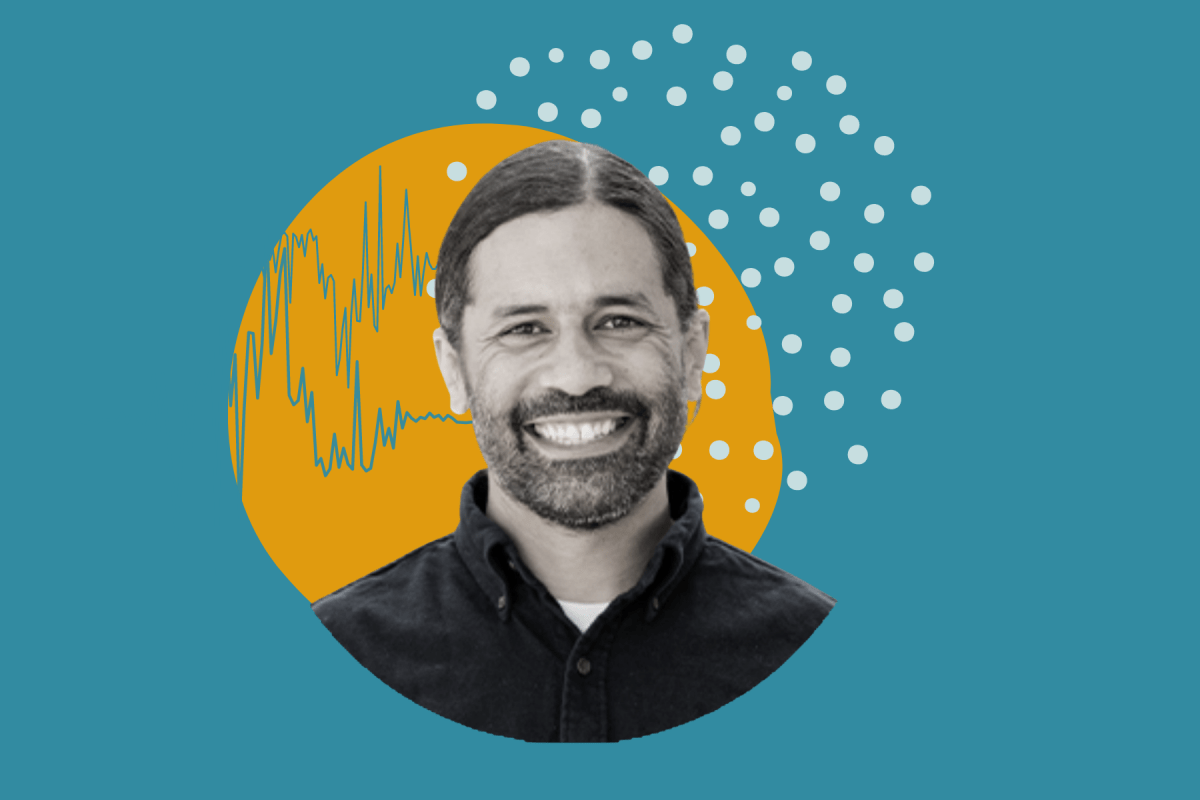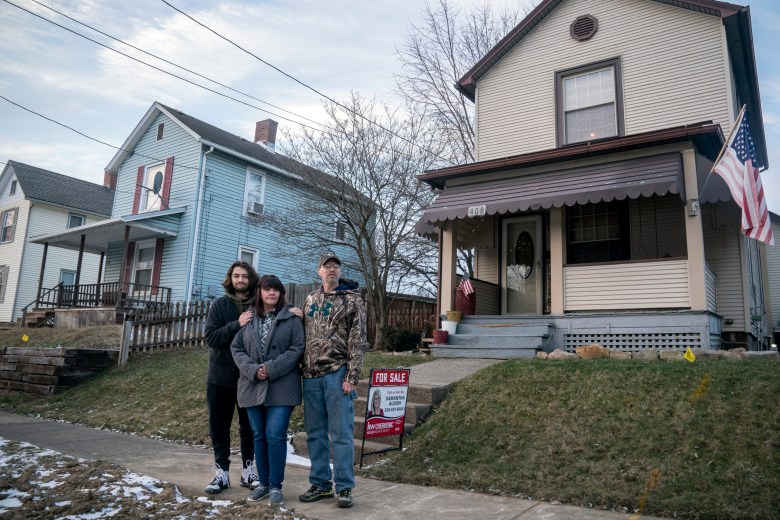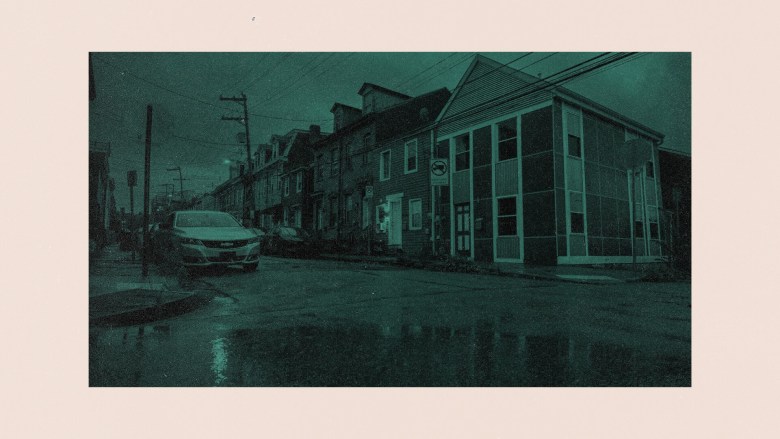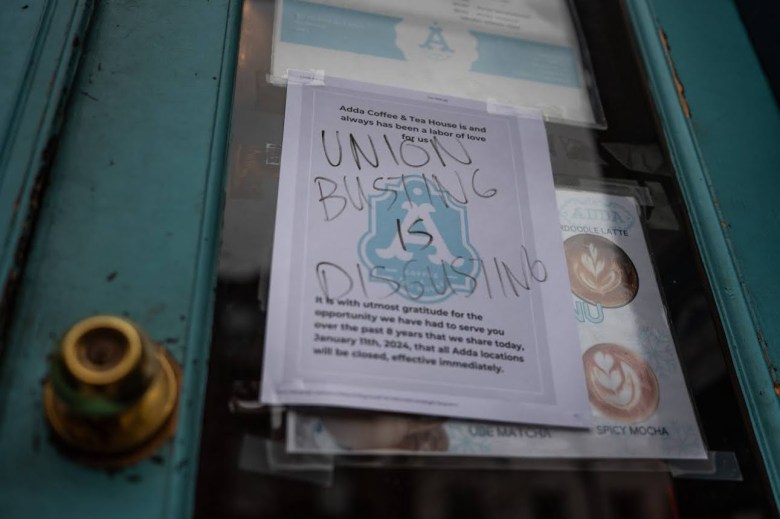Mark Williams is the songwriter, artist and creator of the show, “Hello, Humans!” In this episode of From the Source, Mark talks about the steps he’s taking to inspire kids to be mindful and how families can build mindful practices like meditation into their daily lives.
Transcript
Jourdan: There are hundreds of shows for kids. The North Sider Mark Williams is making one about mindfulness.
Mark: Hello, humans, and Happy Good Neighbor Day. Let’s take a minute and just think about the people in our lives who have been good neighbors.
Jourdan: Mark is a teacher, storyteller and songwriter. The show he’s curating is called “Hello, Humans!”
Mark: Think about those people that you help when they tell you they need something. Yeah, sometimes helping someone is as simple as asking them how they’re doing and really listening. Sometimes being a good neighbor is just giving someone a hug or a high five when they’re feeling bad.
Jourdan: The idea is to give kids and their trusted adults the tools and language to bring mindfulness and meditation into their daily lives. Every episode will feature original music stories and a deep dive into the magical mindful toolbox.
Mark: Any one of those emotions that you’re feeling, I want you to imagine that it’s coming up to you, just like an excited little puppy. Imagine that you’re picking up this puppy. And holding it, this puppy is your fear or your anger or your happiness, whatever emotion you’re feeling. You’re caring for it, and it’s calming down. This emotion is licking your face a little bit. Now imagine that you set this sweet little puppy emotion down and you make space for another feeling. A feeling that you want to feel today. Maybe you want to feel happiness. Maybe you want to feel peaceful or kind. Imagine this emotion is coming to visit you like another puppy.
Jourdan: I experienced it to be very kind, very personable and really passionate about the work that he’s involved in. He says he got the idea and inspiration for Hello Humans from another Pittsburgh Kid Whisperer. This is season three of From the Source. Meet Mark Williams.
Mark: I consider myself a bit of a Mister Rogers nerd, so I’ve geeked out on just about everything I can find. The show that I’m working on with my good friend Michael Savisky is blatantly a tribute to inspired by, in the same vein as Mister Roger’s Neighborhood. And the reason I was so adamant about that is because of one of his key philosophies. And that was the notion that whenever he was writing the script to a show or filming an episode, he always pictured that one child that was watching and he had a way of phrasing it. He said he would imagine that the distance from the child’s eyes to the television screen was sacred ground. And if he was going to write anything or say anything to the camera, it needed to fill that space with something worthy of that child. And I can remember how safe and welcomed I felt when I watched Mr. Rogers as a child. My household was kind of wild and unpredictable. But Mr. Rogers, from his tone, from his demeanor, from the rhythm of the show, the neighborhood of Make Believe, the guests that he had on, the music, all of it just created this space where I felt safe to explore and to learn and really like I had a friend there with me.
Jourdan: What did you come to Hello Humans already knowing how to do when it came to communicating with kids? Teaching, hosting, producing. What skill sets would you say you already came to the table having?
Mark: I’ve been passionate about education for as long as I can remember. Some of my first jobs when I was in high school involves teaching, tutoring. I remember I was teaching snowboarding for a while. I was volunteering and after school programs, tutoring all through college. My first job out of college was mentoring students in a neighborhood called Little Village and Lawndale in Chicago. And I just got the bug and I started working at an organization called the Pittsburgh Project, with kindergartners all the way up through college kids teaching them gardening and ecology and just life skills and coaching basketball. But then I switched gears and went and used my degree. My degree is in elementary education and went back into the classroom. I was working at the Environmental Charter School, teaching third, fourth and fifth grade, and just remembered why it was that I studied education in the first place. I’d come to the realization that nobody spends more time with school age children than a teacher. And if you want to have an impact in the world, in the future, there’s no better investment than investing in kids. And a great way to do that is to be a classroom teacher because you spent so much time with kids.
Jourdan: I read that Hello Humans is a show that is supposed to give families, adults, children the language they need to practice and express ideas around mindfulness, meditation and feelings, and to almost offer the same mature view of mindfulness and consideration for everyone in the family. All ages mindfulness. All ages. Maturity. Knowing how to talk about feelings, et cetera, et cetera. But I would like to know from you, Mark, is how has building this world, this show matured you? How has it grew you up? How has it deepened your understanding of mindfulness and meditation and feelings and the things that you’re trying to share with families?
Mark: Part of what I’ve come to just realize it gives me life. It’s kind of selfish, like I feel better about myself when I’m doing something meaningful, that it gives me hope. And so, that’s, that’s kind of where, I where I landed. As I was teaching, I pursued my master’s in education and I decided to get a master’s in mindfulness for educators. Why mindfulness? Because it had such a profound impact on me personally. I’ve been seeing a therapist for years who had been recommending five things for mental health. He had said meditation medication, close friends, mentors and exercise were the key to staying mentally healthy. And I’d tried everything except the meditation for, I don’t know, maybe five years. And then finally, I tested it out, followed his prompting, and then one thing led to another. I just, the more I learned, the more I read, the more I tried it out, the more I realized I was seeing profound changes in myself. And so I would start trying things out with students. But I noticed that they were experiencing some positive benefits from practicing mindfulness. But I wanted to make sure that I knew what the best practices were, so I started reading and learning more. And at that time, an organization called Awake in Pittsburgh had approached the Environmental Charter School, and they had offered us classes in mindfulness for educators, and I went through three of their programs and just was hooked. And in doing it, I found that it was the most meaningful part of my school day. By giving kids tools to tap into their inner sense of peace and calm, giving kids tools to normalize the human experience, to make space for the full range of emotions that are completely normal and to make space for that to be welcomed into the classroom and to give language for students how to navigate that space, freed us up to actually create a safe enough place for learning to happen in science and social studies and math and literacy. And so I just would make sure to start each class with something small. But eventually we got to integrated into the core curriculum and there were entire courses and units dedicated to studying the science of the brain and the science of mindfulness
Mark: Hi mindfulness students. I came into school early so that I could record a couple of your favorite mindfulness practices. And then the pandemic hit. I came in early because it’s before any of my coworkers are here because I really want to be sure that I’m doing my best to keep everyone safe. And I know you all are doing the same too and I’m proud of you.
Mark: But even when we’re doing our best, we can still get anxious, especially during COVID 19. And so the Mind Castle is a great exercise that you can use any time.
Mark: When the pandemic hit. We started doing it district-wide for K through eighth grade, offering opportunities for students to kind of investigate what was going on in the world, but especially in the interior of ourselves. Because as everyone experienced when the pandemic hit, we were all just inundated with this new level of fear and worry and anxiety and providing this kind of framework to normalize that, Man it, it helped me to be able to come to the classroom in a more honest way, but also in and developmentally appropriate way. Be there for my students as they processed what they were experiencing and the outpouring was like immediate. Parents were reaching out, saying This has been so helpful for my students. Students were, were echoing the same thing. And we started a little just drop-in mindfulness class. I started making videos, weekly videos called Happy Monday. And the premise there was not that we had to pretend to be happy, but that we could only actually truly be happy if we experienced the full range of human emotions. So if we were afraid to make space for that fear, if we were sad to make space for that sadness and in doing so, we also make space for the joy of being together and being human and that happiness to naturally be cultivated. This is the song I wrote when we were studying the science of the brain. I’d invite you to sing along because the science is, is out. Singing together is a way to feel connection to other humans. So I hope you like it. There were a couple parents who were saying, Man, you should do this, you should make a show because my kids love it, and I’m actually sending your videos to my relatives all across the country and they’re benefiting from it. And the parents were saying they benefited from it as much, if not more, than the students may feel.
Mark singing: May I feel content and safe. May I feel protected and pleased, and may my body support me with strength. May my life unfold like a blossom of peace, may my life unfold like a blossom of peace.
Jourdan: What phase is the show in currently?
Mark: Developmental.
Mark: I’ve written a little bit of the pilot script and we got that off to our animator. Part of this section is going to be an animated claymation spot that kind of illustrates and enlivens the mindfulness practice that we’re going to teach the students in each episode. So it’ll be like a two-to-three minute little spot in, in there in, in the show, and that part’s done then sent off to the animator for them to get some ideas working. We’re meeting this week to finalize the script and we’ll start filming when the weather gets a little bit nicer.
Jourdan: Mark, what do you know for sure about kids, about mindfulness and meditation for and by children and practically communicating mindfulness for children?
Mark: A couple of things I know for sure. Number one, don’t force it. It’s going to be optional. It does not work if you force a kid to try mindfulness. In fact, it’s, it’s counterproductive. Two, it can be really, really powerful. You know, tell them the truth. Tell them what you’re doing, you don’t got to trick them into it. Lay out the pros and cons, why you’re excited about it. That’s what I do. I teach through stories. I teach through songs and I tell stories about, you know what was hard for me as a kid and what’s hard for me now and how some of these practices have been helpful. And then I try to, you know, keep it fun. So when I sing this song, if you hear anything that you did to care for yourself today, I want you to raise your hand. OK, you ready?
Mark: When you wake up, make your bed and brush your teeth and hair, wash your face and underarms and change your underwear. When you wake up, make your bed. Brush your teeth and hair. Yeah, that’s a simple way to say just how much you care.
Mark: Good job, everybody. There’s so many ways to practice mindfulness and all of those ways when done with intention, when done with kindness, when done with compassion and curiosity, can start to build new neural pathways in the brain, can start to build connections between the body and the brain and give anyone, but especially students access to that, that resource that’s inside of them just waiting, waiting to show up. And another thing that I’m certain about is that you got to try so many different things because not every not every kid is going to like every single practice. So make sure you put, you put a lot, a lot out there. It’s just like helping kids find their favorite foods. Yeah, give them options. Give them exposure, give them choice. Yeah, it can be really meaningful.
Mark: Do you sing when you’re happy? Do you sing when you feel free? If you take a minute and just listen, you can hear the crickets and the birds and the squirrels, and they only sing when they feel safe and free. If I were to walk close to these crickets that are making noise, they’d be silent. It’s kind of the same with people all by ourselves. We feel overwhelmed when we come together to do something big and maybe even scary. It gives us the freedom to sing, to create, to be free, to make the world a better place.
Jourdan: You can find out more about Mark and find out news about the release of Hello Humans on his website KinderNeighborhood.com.
Mark singing: I wish I knew how it would feel to be free. I wish I could raise all these chains holding me. I wish …
Jourdan: Season three of From The Source podcast is produced by Jourdan Hicks and Andy Kubis and edited by Halle Stockton. If you’re curious to learn how you can share your story with us or appear on an episode of From the Source, you can get in touch with me by sending me an email to Jourdan@publicsource.org. PublicSource is an independent nonprofit newsroom in Pittsburgh. You can find all of our reporting and storytelling at publicsource.org. I’m Jourdan Hicks. Stay safe and be well.
Mark: Then you’d see and agree that everyone should be free. I wish…






